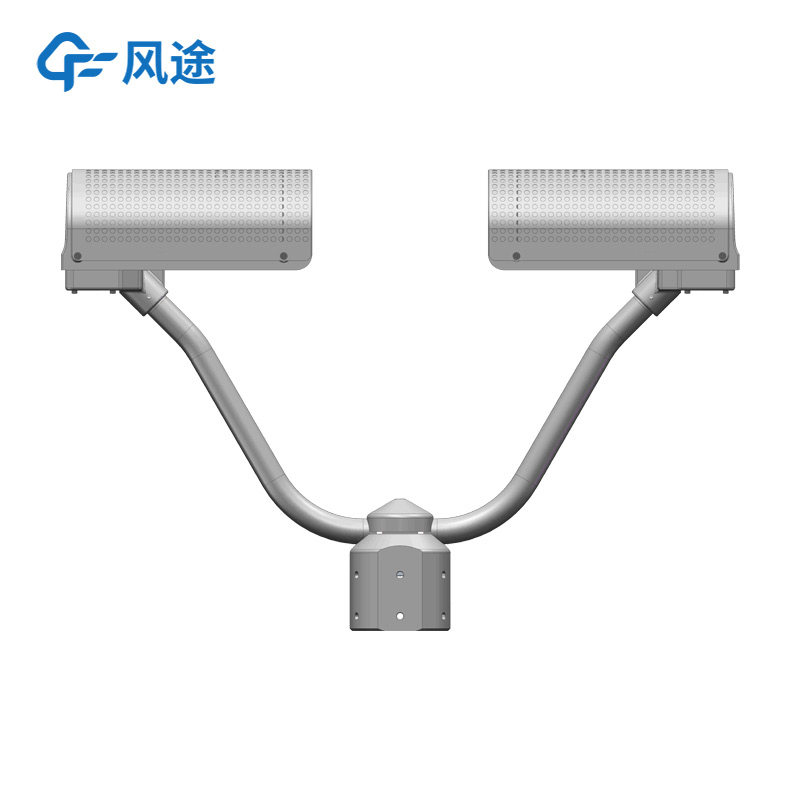Shandong Fengtu IOT Technology Co., Ltd
Sales Manager:Ms. Emily Wang
Cel,Whatsapp,Wechat:+86 15898932201
Email:info@fengtutec.com
Add:No. 155 Optoelectronic Industry Accelerator, Gaoxin District, Weifang, Shandong, China

Sales Manager:Ms. Emily Wang
Cel,Whatsapp,Wechat:+86 15898932201
Email:info@fengtutec.com
Add:No. 155 Optoelectronic Industry Accelerator, Gaoxin District, Weifang, Shandong, China
time:2025-04-02 09:04:19 source:Weather Station viewed:325 time
The YD1 Raindrop Sensor is an intelligent sensor that integrates precipitation particle spectrum monitoring and weather phenomenon identification. By actively emitting an infrared light band, the instrument can capture in real-time the changes in light energy when precipitation particles pass through the light band, and accurately calculate the falling speed and size distribution of the particles. Combining with empirical models, this device can automatically determine the types of precipitation (such as drizzle, rain, sleet, snow, hail, etc.), providing accurate data support for meteorological observations.
Technical Features:
Integrated design with a compact structure (660×450×120mm, weight ≤ 7kg), making it easy to install and deploy.
High environmental adaptability, with an operating temperature range from -40°C to 50°C and a protection level of IP65, capable of adapting to extreme climatic conditions.
Anti-pollution design. The transmitting and receiving ends are equipped with splash-proof covers to prevent precipitation particles from interfering with the sampling area.
Data visualization. Professional software can be optionally selected to display the raindrop spectrum distribution in a graphical form.
Calibration compatibility. A calibration device can be optionally selected to ensure the measurement accuracy during long-term operation.
Core Performance Parameters:
Particle size measurement range: 0.2-5mm for liquids and 0.2-25mm for solids.
Speed measurement range: 0.2-20m/s.
Measurement accuracy: ±5% for liquids and ±20% for solids.
Classification accuracy: 32-level particle size × 32-level speed matrix.
Precipitation intensity measurement range: 0-999mm/h.
Weather codes: Support WMO 4680/4677 or NWS standard output.
Data frequency: The default interval is 60 seconds, which can be customized and adjusted from 10 seconds to 60 minutes.
Electrical and Communication Performance:
Power supply requirements: DC 12-24V input.
Power consumption performance: ≤4W (24V) in non-heating mode and ≤80W (24V) in heating mode.
Communication interface: RS232/RS485 dual mode, compatible with various data acquisition systems.
Application Scenarios:
It is widely used in scientific research institutions, artificial weather modification operations, traffic meteorological monitoring, and disaster prevention and mitigation fields. By monitoring the type and intensity of precipitation in real-time, it provides a scientific basis for meteorological warnings, agricultural planning, and disaster prevention and control. It performs particularly well in complex precipitation weather, with an identification accuracy of precipitation types exceeding 90%.

Recommend a Handheld visibility detector, model FT-SN10.It has several highlights.Firstly, it adopts a special testing method. It sucks air into a closed sampling chamber, which can not only ensure real-time exchange with the outside air but also enable normal measurement in a narrow room.Secondly,...
Accurate monitoring of road conditions is conducive to ensuring traffic safety and improving road operation efficiency. Traditional road monitoring methods have limitations, and the emergence of Road Condition Monitor has brought us new solutions.One of the major advantages of Road Condition Monitor...
As a product of modern meteorological monitoring technology, the Handheld Anemometer is increasingly focusing on portability and user experience in its design. The portable handheld meteorological instrument independently developed by Fengtu is small, lightweight and comes with a portable carrying c...
Temperature and humidity are common terms in daily life, which can be divided into temperature and humidity. Temperature measures the degree of hotness or coldness of an object and is commonly expressed in degrees Celsius and other units. Humidity reflects the water vapor content in the air and is d...